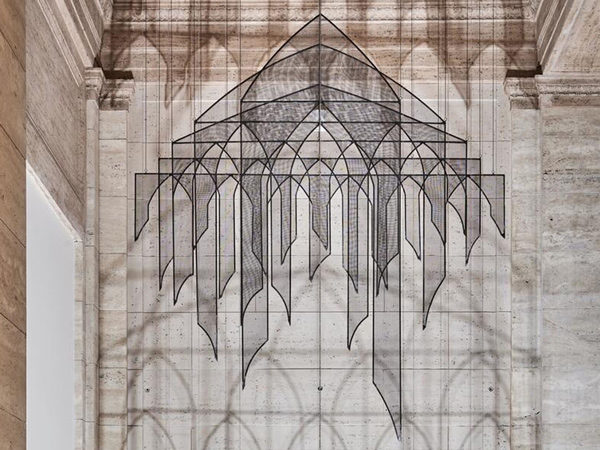Activity
Kandariya Mahadeva Temple

Kandariya Mahadeva temple
This is a Hindu temple called the Kandariya Mahadeva, the largest and tallest of the surviving temples at the temple site of Khajuraho, in central India. It is dedicated to Shiva, who is represented by the linga in the main shrine known as the womb chamber located at the heart of the building.
Hindu temples are designed along axis points that extend from the heart of the chamber upward through the line of the main tower (shikara) and outward in the cardinal directions. The main deity image is located in the central shrine, and the outside of the shrine and the exterior of the temple are richly decorated with sculptures. In some design schemes, one views the entire range of existence looking upwards from bottom to top, with plant and animal life near the bottom and the gods and semi-divine beings in various sculptural registers extending towards the heavens at the temple’s summit. The steeply rising superstructure, and overall mountainous form of this temple are references to the mythical source of creation, the primordial Mount Meru, around which the world came into being.
The Khajuraho temples sit on very large platforms, and it is thought that originally there may have been a lake here beneath them. An association between temple sites and water is appropriate, as an essential part of Hindu worship is ritual bathing, required by the devout in order to purify themselves before entering the sacred area of the temple.
The majority of Hindu temples in north and central India were built between the Gupta period (roughly 300–700 CE) and the 1100s. The temples at Khajuraho are considered among the highpoints of classical Hindu architecture in the northern (nagara) style . This temple and more than 80 others were built by the Chandella kings, who ruled this area of central India between 950–1050 CE. Some temples, such as those at Khajuraho, survived because they were located in remote locations, removed from the conflict and warfare of political and urban centers. Even today, one must fly to Khajuraho, or take a full-day car ride from any other major city center.
Some of the earliest Hindu temples were carved out of living rock and freestanding stone temples evolved gradually after that. Western-style arches and vaults were never used, but masons carved fine sandstone in numerous pieces, which were then assembled and sometimes pinned together using metal rods.
The Khajuraho temples are famous around the world for their fine statuary, many of which depict loving couples, sometimes in erotic poses. These images were disturbing to early European visitors, and even now confound many viewers. Scholars debate the meaning of these images, offering multiple explanations. One interpretation is that they show tantric ritual symbolism. “Tantric” refers to esoteric texts and techniques used in both Hindu and Buddhist practices that offer a direct path to enlightenment or spiritual release using the body’s natural energies as a starting point. Thus, physical pleasure, and more specifically a controlled experience of physical pleasure, could be a path to spiritual achievement. Such imagery may also challenge to the viewer to move beyond the earthly experience of physical pleasure into higher spiritual goals. The location of these loving couples on the temple walls, between the meeting hall portion of the temple and the inner sanctum, seems critical to their interpretation.
Various esoteric and mainstream texts describe sexual activities and postures, including the comprehensively categorical Kama Sutra. It is likely that these erotic sculptures take such texts as the source of their subject matter. Aesthetically, these sculptures are highly sophisticated, expressing virtuosity in their rendering of human figures, expression and interaction, and an extremely imaginative vision of physical acrobatics.







